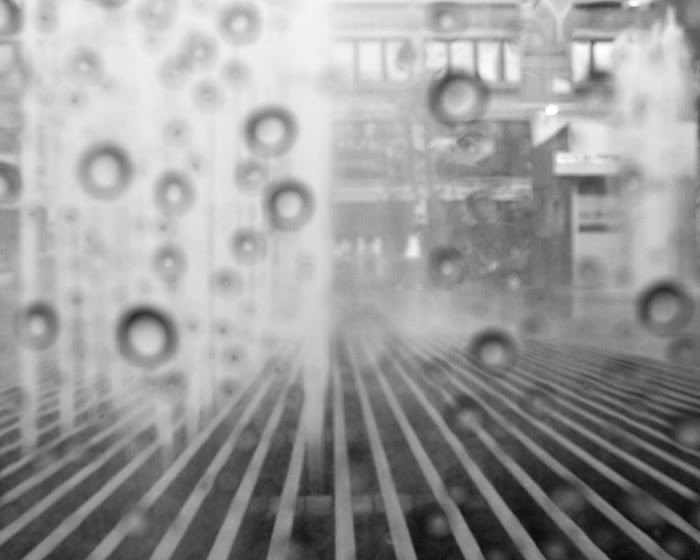I wrote, back in August, that "there are times when I will choose the more limited tool specifically for the way it will impose itself on the process and results." I'm mostly thinking about film cameras when I say that; the electronic perfection from digital cameras makes it much easier for me to accept a certain randomness and character from film cameras.
Limitations from digital cameras aren't quite as charming when they show up in the final print, and I'm having my patience tested by my newest acquisition, a Nikon V1.

The V1 is an obnoxious little camera, badly thought out and flawed in fundamental ways. But I wouldn't have taken the photo above without it, and it sparked a whole range of exploration for me. Yes, I made a special trip back to this subject so that I could point my D800 at it, but I can't say that I like its results any better than this. Something mundane – a pickup truck parked in my way – stopped my sharply prime-lensed D800 from bringing all of its pixels to bear, requiring a not-yet-made return trip with the heavy equipment. That seems like a lot of work to exceed what was originally a spontaneously found image.
The limitations that I face with the V1 are significant, though. This photo won't go above 18x12", and to get it that large I need to crop with the lens, not the computer. The camera has serious operational issues that have ruined many photos for me, and I'm not sure that I've discovered all of its little surprises. And it's about three stops worse than my D800 in most measurable ways, so I need to think very hard about solving problems that simply don't exist with the heavier Nikon.
And yet I use the V1 anyway, and have used it for thousands of photos in my first month of owning it. Its limitations don't negate its capabilities, and if it wasn't for the flexibility of small cameras like this – ones where image quality isn't the most important factor – then I wouldn't be able to specialize with my D800 and its small collection of prime lenses.
I stand by my belief that there is no "best" camera, digital or film. Different needs, and different questions, will always have different answers.
Comments, questions, thoughts? You can find me on Twitter or via e-mail.





























